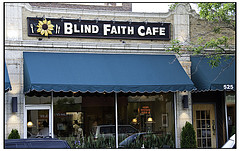 The ultimate quest of any organization or cause is to develop an army of committed fans, customers, employees, volunteers, or contributors. And yet, developing loyalty and commitment, the kind that makes people want to reach for their wallet and evangelize products and companies, remains a mystery seeming left to chance.
The ultimate quest of any organization or cause is to develop an army of committed fans, customers, employees, volunteers, or contributors. And yet, developing loyalty and commitment, the kind that makes people want to reach for their wallet and evangelize products and companies, remains a mystery seeming left to chance.
I believe there’s a pattern to commitment – why we give it, how we earn it, and how we build on it – that can be understood both strategically and tactically and used to develop a systematic attachment or commitment to any organization’s mission or cause.
Now, I hope you understand that my intentional use of the word heroic in the title of this post suggests that building the kind of commitment I’m talking about isn’t something that’s made up or faked – this is the real deal through and through.
This is a topic I plan to explore extensively over the next few months because I believe it is fundamental to the success of any business and critical to the realization of any marketing plan. (If you find this topic interesting I hope you’ll jump in and discuss it here.)
Below are some of the first questions or positions of understanding that must be explored to set the table for a deeper conversation on commitment.
What interests commitment?
People are drawn to organizations and causes for different reasons and there is a strong generational shift in the foundation of those reasons that organizations must understand and consider.
- My parents are drawn to organizations, brands and institutions that feel concrete, stable and consistent. Churches, for example, are a staple of the commitment of their generation as are Dow Jones, blue chip stock type companies.
- My brothers and sisters are drawn to causes and brands that support and stimulate the planks of those causes. Environmental sustainability and equal rights for women in the workplace are prime examples of the commitments they are drawn to.
- My children are drawn to community and tight knit groups of friends and tend to be influenced most heavily by things they can do with their community. They appear less likely to form a commitment based on faith or tradition alone.
Why is commitment hard?
Building loyalty, the kind that will overlook the occasional misstep, is hard because it requires loss of control. Committing to something is actually a form of giving up freedom. People fail to commit because of a perceived potential loss – it’s the number on fear in relationship commitment.
Organizations that want to garner a strong sense of loyalty must find ways to remove this fear. They must build trust by delivering a consistent, on brand, experience in every interaction and through every decision. People have grown skeptical by nature. If you want them to invest their faith in your brand you can’t ever let them down.
Commitment is a two-way street. You can’t build loyalty if you’re not will to be loyal.
What really drives commitment?
I am developing a number of case studies of organizations, both for profit and non-profit, that exemplify and foster commitment at every level, but I’ve already noticed a significant driver in every organization that breeds loyalty.
People commit most often to a story they can believe in, to something that inspires them to act, to something that helps them see how they can be the best version of themselves.
Organizations that drive commitment have a story to tell – one that answers in very simply terms why we do what we do and why you might want to believe in it as well. This doesn’t mean that every story has to be a profound, earth saving mission, it can be a simple as a product design that inspires. (Dyson comes to mind here.) But, for the loyal fan the story must provide their own unique epic meaning.
Organizations that drive commitment are themselves driven by a core set of beliefs and behavior that supports those beliefs. People in these organizations are willing to work very hard because they are doing the right kind of work. Customers are willing to voluntarily tell the story to others because these organizations give them something to believe in.
Organizations that drive commitment are, in their own boisterous or silent ways, doing something that someone finds heroic.
Image credit: swanksalot

